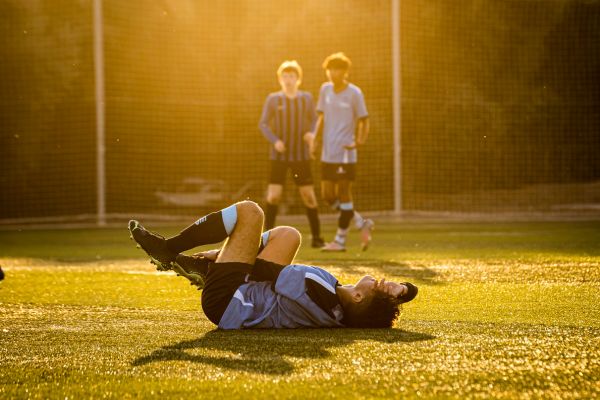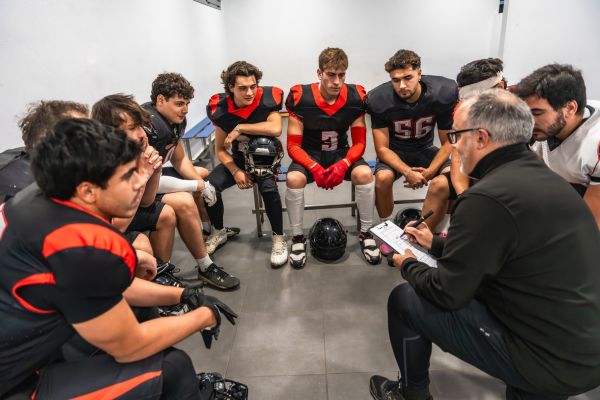Let’s be real—there’s nothing more frustrating for an athlete than getting sidelined by an injury just when things are starting to click. Whether you’re training for your next marathon, grinding through football drills, or hitting the gym religiously, you’re putting your body on the line every single day. That’s why having some solid injury prevention tips for athletes in your back pocket isn’t just helpful—it’s essential.
Now, we’re not just talking about stretching for a few seconds and calling it good. Nope. Avoiding injuries goes deeper than that. It’s a mindset, a daily routine, a lifestyle tweak here and there. So, if you’re all about keeping those gains and staying pain-free, keep reading. Let’s dive into some smart, real-world advice that’ll help you stay strong, mobile, and out of the doctor’s office.
Know Your Body—And Listen to It
Here’s the thing: your body talks to you. Not with words, obviously, but through tightness, soreness, fatigue, or that subtle “uh-oh” feeling in your knee. Ignoring those little warning signs is like ignoring the check engine light in your car. Eventually, something’s gonna break down.
So, one of the most overlooked injury prevention tips for athletes is simply learning to listen. You feel unusually sore after a workout? Maybe it’s time to ease up the intensity tomorrow. Got a weird twinge in your shoulder? Don’t push through it—figure out what’s up.
Listening doesn’t mean backing off forever. It just means being smart enough to know when your body needs a breather.
Warm Up Like You Mean It
Let’s not sugarcoat it: skipping warmups is lazy. And dangerous. You can’t just jump into sprinting, lifting, or cutting across a field without prepping your muscles and joints first. That’s like hitting top speed without checking your tires.
A proper warm-up doesn’t have to be some long, drawn-out ordeal. But it should get your heart rate up and your blood flowing. Light jogging, dynamic stretches, mobility drills—whatever gets your engine revving. Your muscles need to be warm and ready, not cold and shocked.
Seriously, spending even 10 minutes on a solid warm-up can save you weeks of rehab later on.
Mobility > Flexibility
Everyone talks about stretching like it’s the holy grail, but here’s a little secret: mobility matters more. Being flexible is cool and all, but if your joints can’t move well through a full range of motion under control, you’re still setting yourself up for problems.
Mobility work helps improve how your body moves, not just how far it can stretch. And that’s a game-changer. Think hip openers, thoracic spine rotations, ankle mobility drills. Athletes who focus on mobility tend to move better, perform better, and yeah, avoid injuries way more often.
So, next time you’re foam rolling or working on that tight hamstring, mix in some mobility drills. Your body will thank you.
Strength Training Isn’t Optional
Too many athletes—especially younger ones—skip strength training, thinking it’ll make them bulky or slow. Truth is, being strong is one of the best injury prevention tips for athletes. Muscle imbalances, weak stabilizers, and poor core strength are all major contributors to injuries.
Strength training doesn’t mean maxing out every day. It means training smart. Building muscle where you need it. Strengthening your tendons and ligaments. Giving your body the armor it needs to handle the demands of your sport.
Whether you’re an endurance athlete or a weekend warrior, some resistance training is a must if you want to stay in one piece.
Rest and Recovery: The Unsung Heroes
Here’s a wild thought: you don’t get stronger while you train—you get stronger while you recover. That’s why sleep, rest days, and recovery techniques are so critical.
Too many athletes treat recovery like a luxury instead of a necessity. But pushing through without adequate rest? That’s a one-way ticket to burnout and injury.
Sleep at least 7–9 hours a night. Take rest days seriously—no, active recovery doesn’t mean hitting a five-mile run. Use tools like massage, ice baths, compression, or just some good ol’ couch time. And let’s not forget nutrition. You need to feed your recovery, not just your workouts.
In short: train hard, recover harder.
Perfect Your Form, Even on the Basics
You could be lifting a 20-pound dumbbell or sprinting a 40-yard dash—either way, bad form is a silent killer. It’s sneaky. It feels fine for a while… until it doesn’t.
One of the most underrated injury prevention tips for athletes is mastering the basics with proper form. That means learning how to squat correctly. How to run efficiently. How to land from a jump without blowing out your knee.
Working with a coach or even filming yourself during training can help you spot flaws. Fixing those early saves you a whole lot of pain later.
Don’t Skip the Small Stuff
Athletes love the big lifts, the hard sprints, the fast drills. But it’s often the “boring” stuff that makes the biggest difference. Think: strengthening your rotator cuffs, improving your balance, doing foot and ankle stability drills.
These small muscles and stabilizers are like the unsung heroes of your body. They keep the big stuff aligned and functioning. Neglecting them? That’s like building a house on a wobbly foundation.
It may not be glamorous, but those tiny, targeted exercises often end up being the real MVPs when it comes to staying injury-free.
Hydration Isn’t Just for Show
We all know hydration matters, but most people still don’t drink enough. And guess what? Dehydrated muscles are more prone to cramps, tears, and strains. Not to mention your joints rely on fluids to stay lubricated.
So yeah, keeping that water bottle nearby isn’t just a fitness flex—it’s a legit injury prevention tip for athletes. Aim to stay consistently hydrated throughout the day, not just before workouts. And don’t sleep on electrolytes if you’re training hard or sweating buckets.
Bottom line: water helps your body function. A well-functioning body stays healthy. Easy math.
Be Proactive, Not Reactive
Too many athletes wait for something to go wrong before they start paying attention to their health. But by then? It’s usually too late. A reactive mindset keeps you bouncing between injuries and setbacks.
Being proactive means doing the little things consistently. Warm-ups, cool-downs, mobility work, recovery—those aren’t chores. They’re investments in your performance and longevity.
So, whether you’re a seasoned pro or just starting out, don’t wait for a scare to take injury prevention seriously. Make it part of your daily grind.
Final Thoughts: Stay in the Game, Not on the Bench
Here’s the truth—injuries happen. No one’s invincible. But by building habits around these injury prevention tips for athletes, you’re stacking the odds in your favor. You’re training smarter, not just harder. And that’s what separates the athletes who thrive from the ones constantly sidelined.
So, the next time you’re tempted to skip your warm-up or push through that weird ache—don’t. Respect your body. Trust the process. And stay focused on the long game.
Because at the end of the day, staying healthy isn’t just about avoiding injuries. It’s about giving yourself the best shot to chase your goals, day after day, without interruption.
Now go train. Just don’t forget to take care of yourself while you do.



